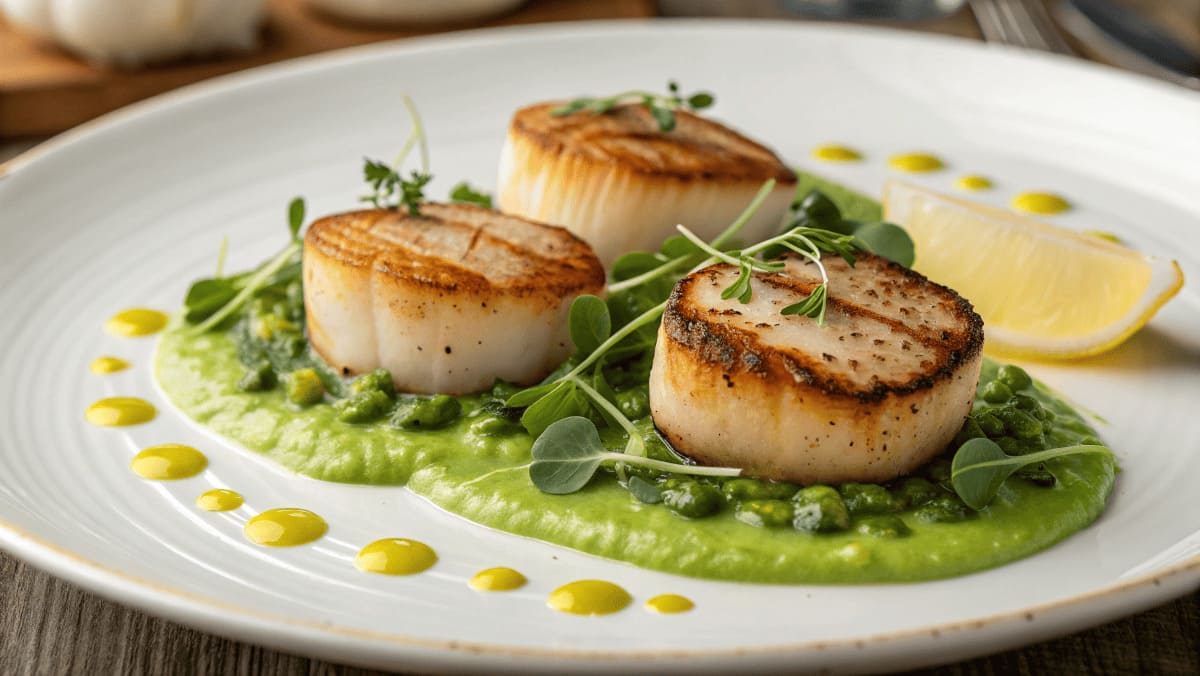Why Poke Cake is Everyone’s Favorite Dessert
Poke cake has quickly become a baking sensation, and it’s easy to see why! With its unique preparation method of poking holes into a freshly baked cake and filling them with deliciously flavorful ingredients, this dessert guarantees moistness and richness in every bite. Whether infused with gelatin, pudding, sweet syrups, or fruit purees, poke cake offers an endless array of flavor combinations, making it a versatile and crowd-pleasing treat for any occasion.
For those who love effortless yet impressive desserts, poke cake is a must-try. Pair it with creamy delights like Churro Cheesecake for a show-stopping dessert spread that will wow your guests!
What Makes Poke Cake So Special?
The magic of poke cake lies in its simplicity and adaptability. Unlike traditional cakes that rely solely on frosting or layered fillings, poke cakes take dessert to the next level by infusing each bite with moisture, flavor, and texture. The tiny pockets created by poking holes allow the cake to soak up flavorful fillings, ensuring every forkful bursts with taste.
One of the best things about poke cakes is their limitless creativity:
🍓 Craving something fruity? Try a strawberry or lime gelatin filling for a vibrant, refreshing twist.
🍫 Want something indulgent? A chocolate cake with caramel or peanut butter pudding is a decadent dream.
🎂 Celebrating a special occasion? Customize it with seasonal flavors like pumpkin spice in the fall or lemon-blueberry for summer.
This flexibility makes poke cakes perfect for everything, from casual family desserts to elegant party centerpieces.
What’s even better? You don’t need to be a professional baker to create a masterpiece. Whether you use a boxed cake mix or homemade batter, the process remains quick, simple, and foolproof—just bake, poke, pour, and enjoy! This effortless yet impressive method mirrors the charm of elegant layered desserts like Strawberry Mille-Feuille, where every element blends harmoniously to create a visually stunning and flavor-packed treat.
Beyond its taste and presentation, poke cake is also perfectly customizable for any holiday or theme. A red-and-green gelatin poke cake makes for a festive Christmas dessert, while a lemon-blueberry version is light and refreshing for summer gatherings. With endless possibilities, each poke cake can be unique and tailored to suit your personal taste.
The Joy of Baking and Sharing Poke Cake
What truly sets poke cake apart is the joy it brings—both in making and sharing it. Watching the fillings seep into the cake, layering it with toppings, and decorating it with vibrant colors turns baking into an art form. It’s a dessert that’s as fun to create as it is to eat!
Whether you’re making it for a birthday, holiday, or casual weekend treat, a poke cake is guaranteed to impress. Its nostalgic charm combined with innovative flavors makes it a beloved favorite for generations to come.
How to Make This Dessert: A Step-by-Step Guide
Now that you know why poke cake is so special, it’s time to create your own! Follow this step-by-step guide to make a perfectly moist, flavorful poke cake that will have everyone asking for seconds. 🎂✨
Ingredients: What You’ll Need
- Cake Base:
- Use a boxed mix for convenience or bake your cake from scratch using your favorite recipe. Popular options include vanilla, chocolate, or yellow cake. For a lighter texture, consider incorporating buttermilk or yogurt into your batter.
- Fillings:
- The fillings are what make a poke cake special. Choose from:
- Gelatin: Adds a fruity and colorful touch.
- Pudding: Creates a creamy, indulgent texture.
- Fruit Syrups or Purees: Perfect for a natural and refreshing flavor.
- The fillings are what make a poke cake special. Choose from:
- Toppings:
- Finish your cake with:
- Whipped cream for a light and airy texture.
- Frosting for added sweetness and structure.
- Sprinkles, fresh fruit, nuts, or crushed cookies to elevate the presentation.
- Finish your cake with:
Instructions: Step-by-Step Preparation
1. Bake Your Cake
Begin by preparing your cake base. If you’re using a boxed mix, follow the instructions provided on the package, adjusting ingredients to enhance the flavor if desired. For example, substitute milk for water or use melted butter instead of oil to enrich the taste.
If baking from scratch, ensure the batter is evenly spread in the pan to achieve a uniform bake. Use a 9×13-inch pan, as it provides ample surface area for creating the signature holes and holding the fillings.
2. Poke Holes
Allow the baked cake to cool completely before proceeding. This prevents it from crumbling when you poke the holes. Using the handle of a wooden spoon, a skewer, or a chopstick, poke holes evenly across the surface of the cake. Space them about 1 inch apart to ensure adequate filling distribution.
Pro Tip: Avoid going too deep with the holes; they should penetrate through most of the cake but not break the bottom layer. This keeps the structure intact while allowing the filling to seep through effectively.
3. Add the Filling
- Prepare your chosen filling. If you’re using gelatin, dissolve it in hot water and let it cool slightly before pouring. For pudding, whisk it until smooth and creamy.
- Slowly pour the filling over the cake, focusing on the holes. Use a spatula to spread any excess filling evenly across the surface.
This step transforms the cake, infusing it with moisture and flavor. The filling not only enhances the taste but also adds a beautiful layered effect when the cake is sliced.
4. Chill
Refrigerate the cake for at least two hours to allow the filling to set and fully integrate with the cake. This step is crucial for achieving the signature moistness and ensuring the flavors meld together.
Pro Tip: Cover the cake with plastic wrap during refrigeration to prevent it from drying out or absorbing unwanted fridge odors.
5. Decorate
Once chilled, it’s time to unleash your creativity! Spread whipped cream or frosting over the surface of the cake. Add garnishes such as:
- Fresh fruit for a vibrant and natural touch.
- Crushed cookies for texture and crunch.
- Sprinkles to make it festive and colorful.
Don’t be afraid to layer your toppings for a more dramatic and delicious effect!
Additional Baking Tips
- For precise timing and techniques, check out the Ultimate Guide to Baking, which offers insights on perfecting your dessert-making process.
- Experiment with flavor combinations by matching cake bases with complementary fillings and toppings. For example, a chocolate cake with caramel filling and whipped cream topping creates a rich and indulgent treat, while a vanilla cake with lemon filling offers a bright and refreshing experience.
- Use a serrated knife for slicing the cake to maintain clean, sharp edges and showcase the beautiful filling layers.
Flavor Variations to Try
There’s no shortage of creativity with this dessert. Here are some popular options:
- Fruity Flavors: Use gelatin in fruity flavors like strawberry or lime to create vibrant layers.
- Rich and Creamy: Chocolate cake with peanut butter filling is a decadent option.
- Classic Comforts: A banana pudding version topped with wafers and whipped cream is always a hit.
Pair it with lighter dishes like a Tomato Burrata Salad for a balanced meal.
Creative Twists for Adventurous Bakers
Take your creation to the next level with these unique ideas:
- Holiday Flavors: Add pumpkin spice or peppermint filling for seasonal flair.
- Liqueur-Infused Layers: Mix Baileys or rum into your filling for a grown-up version.
- Diet-Friendly Options: Substitute gluten-free flour or plant-based ingredients to suit any dietary needs.
Expert Tips for a Perfect Dessert
- Fill Holes Properly: Ensure even filling distribution for consistent flavor.
- Chill for Best Results: Refrigerate your cake to enhance the texture and flavor infusion.
- Experiment with Garnishes: Try crushed nuts, fruit slices, or edible flowers for decoration.
A Treat Worth Trying – The Magic of Poke Cakes! 🎂✨
Whether you’re a seasoned baker or someone who just enjoys making simple, delicious desserts, poke cakes are a treat you absolutely must try. This dessert is more than just a cake—it’s an interactive, flavorful, and visually stunning masterpiece that brings excitement to every bite.
With endless flavor possibilities, fun textures, and easy preparation, poke cakes are truly a versatile dessert for any occasion. From classic vanilla and strawberry Jello cakes to decadent chocolate caramel creations, there’s a poke cake for everyone’s taste!
Why Poke Cakes Are a Must-Try Dessert
✔ Unbelievably Easy to Make – Even if you’re not an experienced baker, this cake is practically foolproof!
✔ Incredibly Moist & Flavorful – The filling soaks into every bite, keeping the cake deliciously soft.
✔ Customizable for Any Occasion – Whether it’s a birthday, holiday, or casual treat, you can adapt poke cakes to fit the theme.
✔ Visually Stunning – The vibrant colors and layers make this cake as beautiful as it is delicious.
✔ A Fun Baking Experience – Perfect for baking with kids, family, or friends.
No matter your skill level or taste preference, a poke cake never fails to impress.
Get Creative – Your Next Baking Adventure Awaits!
Now that you’ve mastered the art of poke cakes, why not take your baking skills even further? Experiment with:
🎂 New Cake Flavors – Try unique bases like red velvet, coconut, or even spice cake.
🍓 Exciting Fillings – Go beyond Jello and pudding—think fruit purées, caramel, or Nutella!
🎉 Fun Toppings – Layer it with whipped cream, cookie crumbs, nuts, and chocolate drizzle for extra texture.
The beauty of poke cakes is that there are no limits—every time you bake one, you can try a new and exciting variation!
Looking for More Delicious Desserts? 🍰
Ready to explore more creative recipes? Here are some delicious treats you might love:
👉 French Apple Pie Recipe – A warm, spiced apple filling inside a flaky crust, perfect with your poke cake! 🍏🥧
Baking is all about creativity—so have fun, try new ideas, and keep experimenting in the kitchen!
Time to Bake Your Own Poke Cake! 🎂🔥
What are you waiting for? Preheat your oven, pick your favorite flavors, and let the baking fun begin!
💬 What’s your favorite poke cake flavor? Share your ideas in the comments below! ⬇️🍰🎉




